-
CATEGORY ::
- All Seeds /
- All Flower Seeds /
- All Poppy Seeds
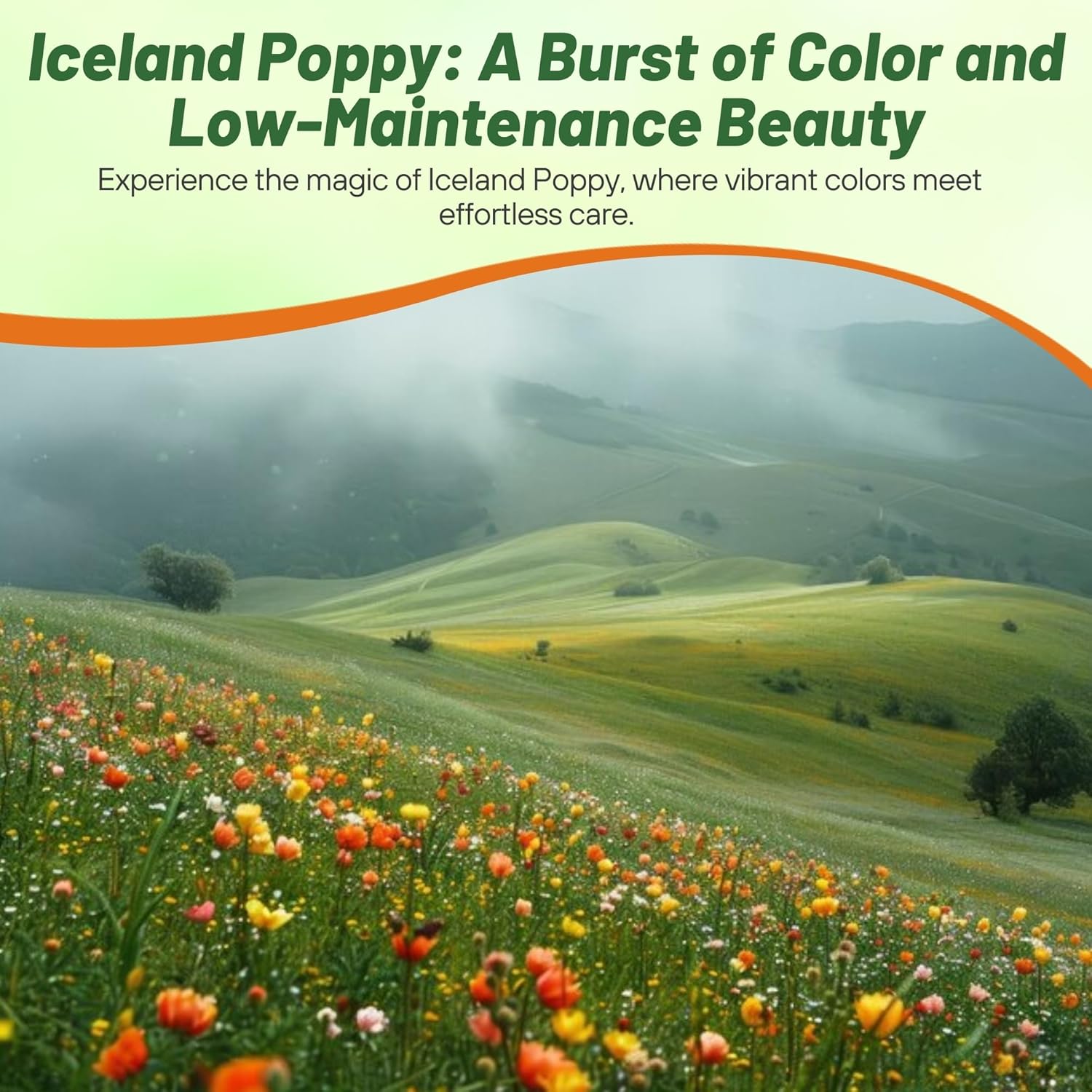

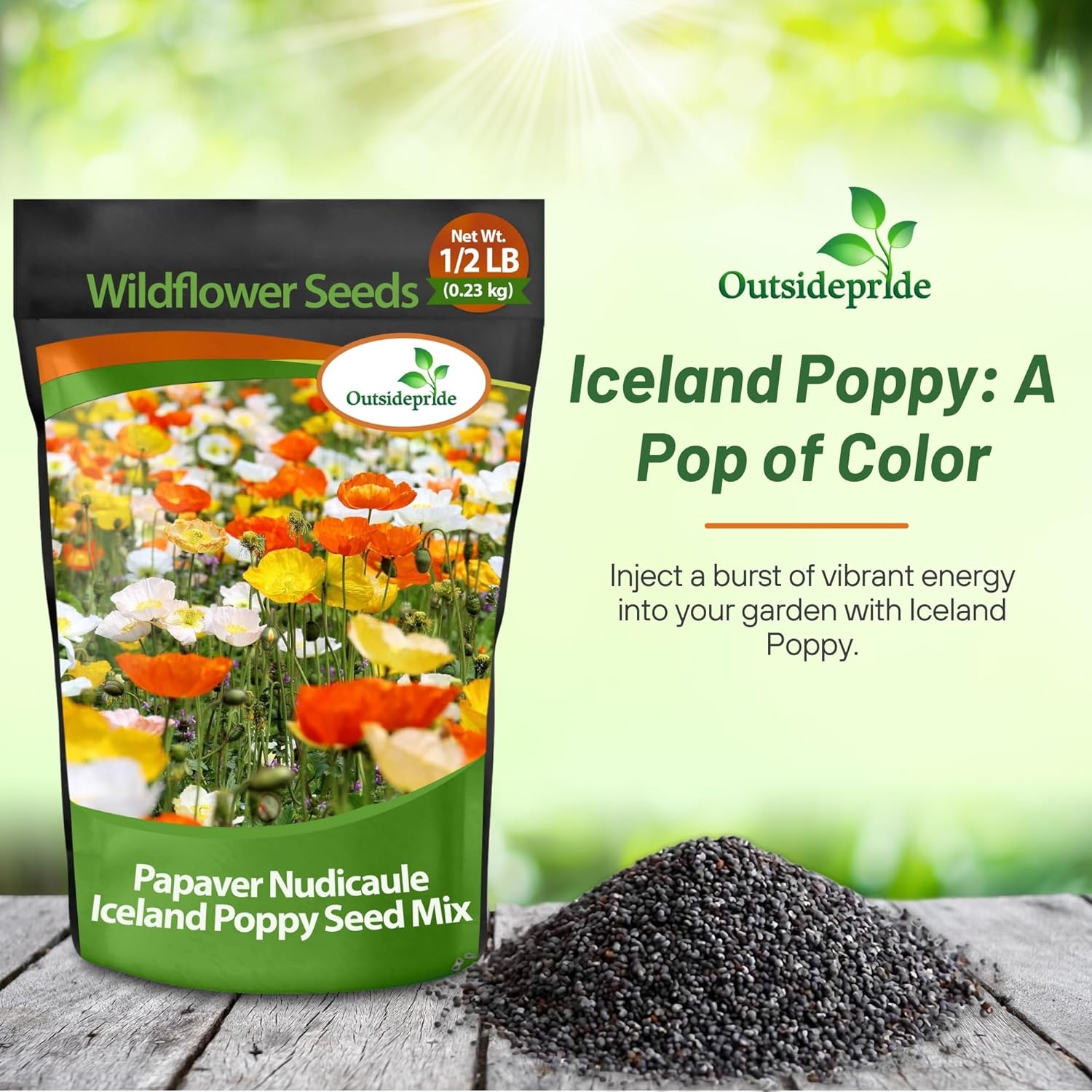

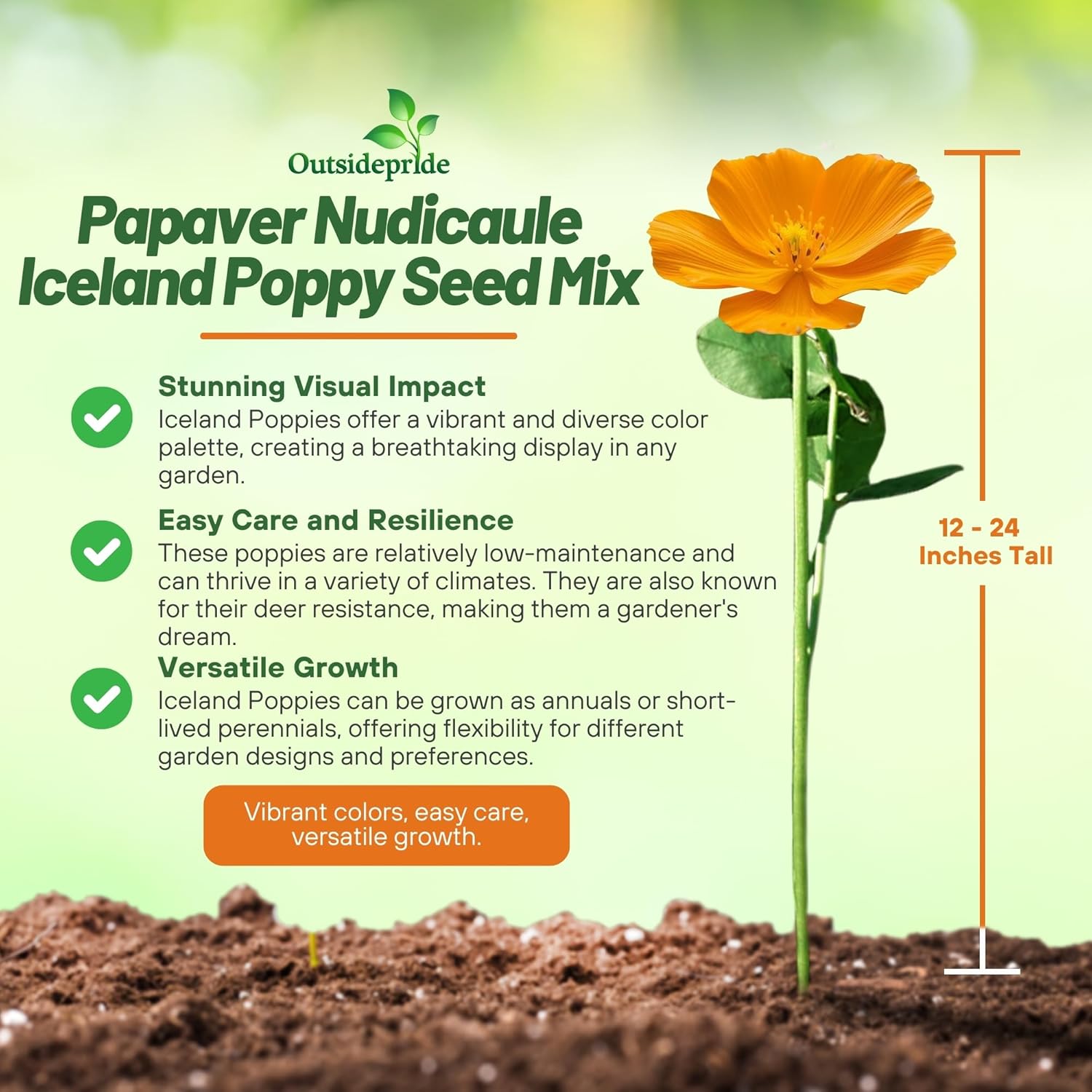
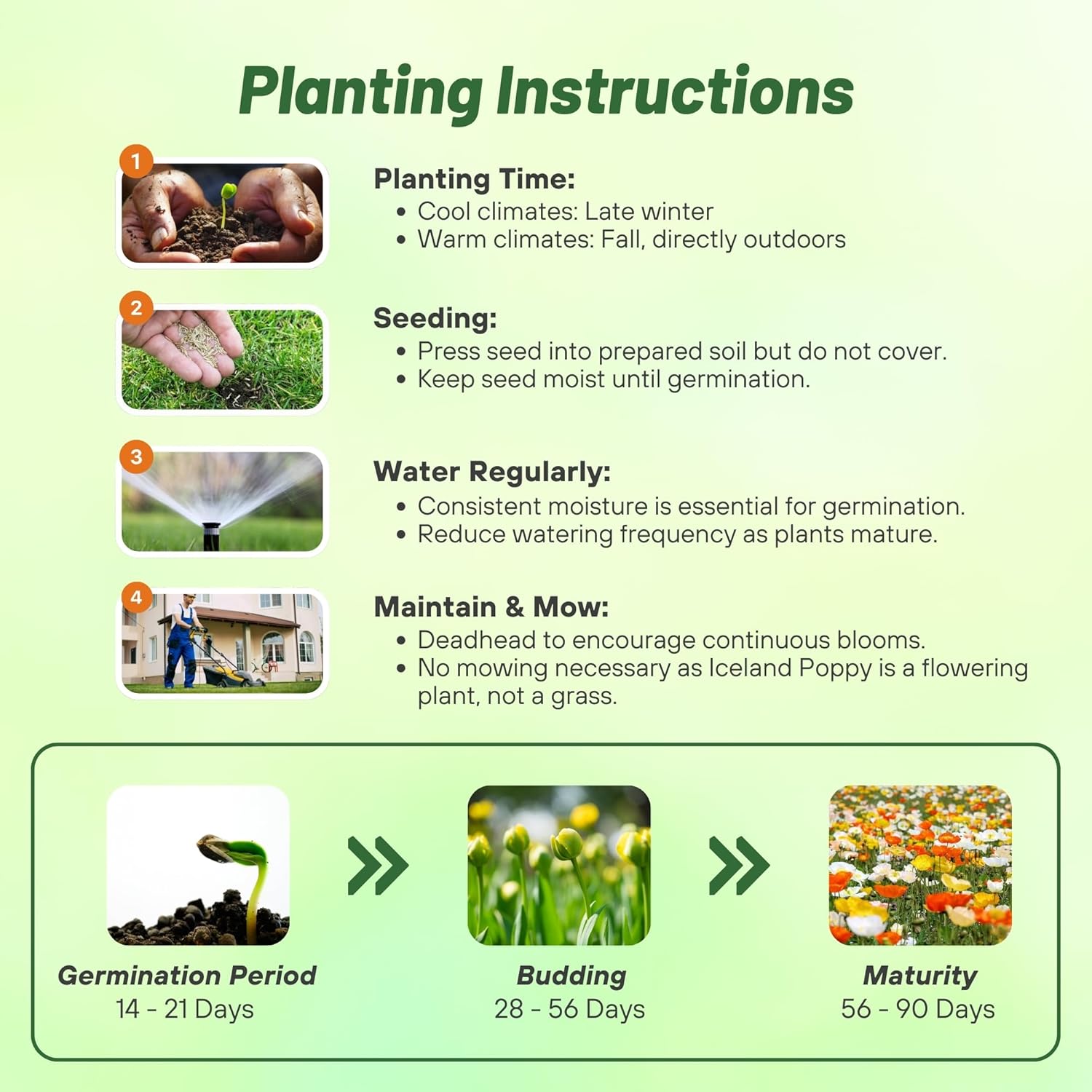
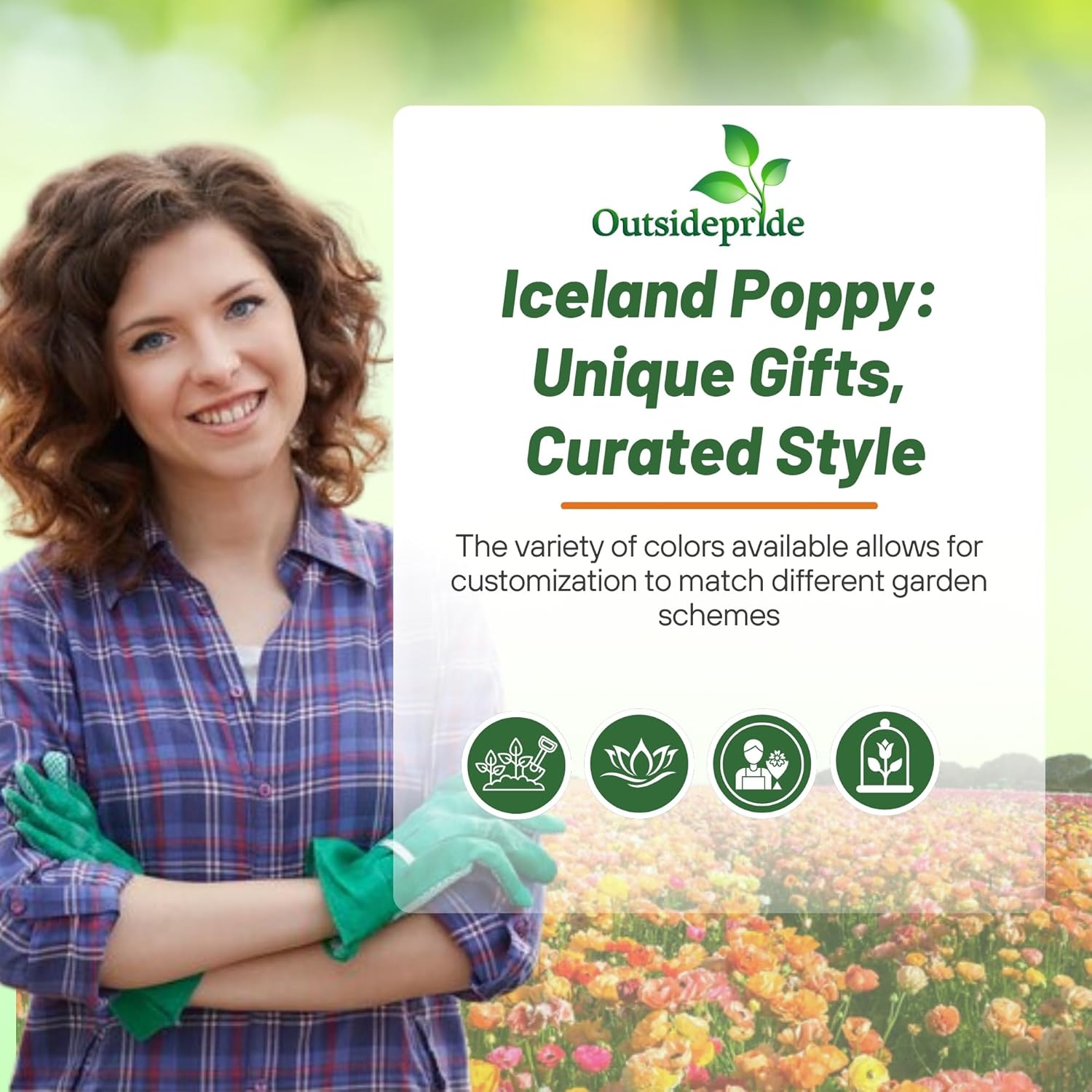




Poppy Seeds - Iceland
SEEDS PER POUND
2,780,000
SEASON
Annual
USDA ZONES
3 - 9
HEIGHT
12 - 24 inches
BLOOM SEASON
Summer
BLOOM COLOR
Mix
ENVIRONMENT
Full sun
SOIL TYPE
Loose, well-drained, pH 6.6 - 7.8
DEER RESISTANT
Yes
SEEDS PER POUND
3,400,000
SEASON
Annual
USDA ZONES
3 - 9
HEIGHT
12 - 15 inches
BLOOM SEASON
Summer
BLOOM COLOR
Red
ENVIRONMENT
Full sun
SOIL TYPE
Loose, well-drained, pH 6.1 - 7.3
DEER RESISTANT
Yes
SEASON
Perennial
USDA ZONES
4 - 9
HEIGHT
24 - 36 inches
BLOOM SEASON
Late spring through early summer
BLOOM COLOR
Black and white
ENVIRONMENT
Full sun
SOIL TYPE
Well drained soil, pH 5.5 - 7.5
DEER RESISTANT
Yes
SEASON
Perennial
USDA ZONES
3 - 8
HEIGHT
12 inches
BLOOM SEASON
Mid spring to early summer
BLOOM COLOR
Orange
ENVIRONMENT
Full sun
SOIL TYPE
Loose, well-drained, pH 6.1 - 7.3
DEER RESISTANT
Yes
SEASON
Annual
USDA ZONES
3 - 10
HEIGHT
10 - 12 inches
BLOOM SEASON
Mid spring to late summer
BLOOM COLOR
Mix
ENVIRONMENT
Full sun
SOIL TYPE
Prefers gritty, fast-draining conditions, pH 6.6 - 7.5
DEER RESISTANT
Yes
SEASON
Annual
USDA ZONES
3 - 10
HEIGHT
12 inches
BLOOM SEASON
Mid spring to late summer
BLOOM COLOR
Pink
ENVIRONMENT
Full sun
SOIL TYPE
Prefers gritty, fast-draining conditions, pH 6.6 - 7.5
DEER RESISTANT
Yes
SEASON
Annual
USDA ZONES
3 - 10
HEIGHT
10 inches
BLOOM SEASON
Mid spring to late summer
BLOOM COLOR
Yellow
ENVIRONMENT
Full sun
SOIL TYPE
Prefers gritty, fast-draining conditions, pH 6.6 - 7.5
DEER RESISTANT
Yes
SEASON
Annual
USDA ZONES
3 - 10
HEIGHT
10 inches
BLOOM SEASON
Mid spring to late summer
BLOOM COLOR
White
ENVIRONMENT
Full sun
SOIL TYPE
Prefers gritty, fast-draining conditions, pH 6.6 - 7.5
DEER RESISTANT
Yes
About...
Iceland Poppy (Papaver Nudicaule) - Easy-to-grow from Iceland Poppy seeds, these blooms come in an array of colors. Measuring 4 - 5 inches across, these single Poppy blooms open in shades of white, yellow, orange, pink, rose, and red as well as bi-colors!
MORE POPPY OPTIONS
Planting Directions
TEMPERATURE
55 - 60F
AVERAGE GERM TIME
21 - 28 days
LIGHT REQUIRED
Yes
DEPTH
Do not cover the seed but press into the soil
SOWING RATE
1/3 ounce per 1,000 square feet or 1 pound per acre
MOISTURE
Keep seeds moist until germination
PLANT SPACING
12 - 18 inches
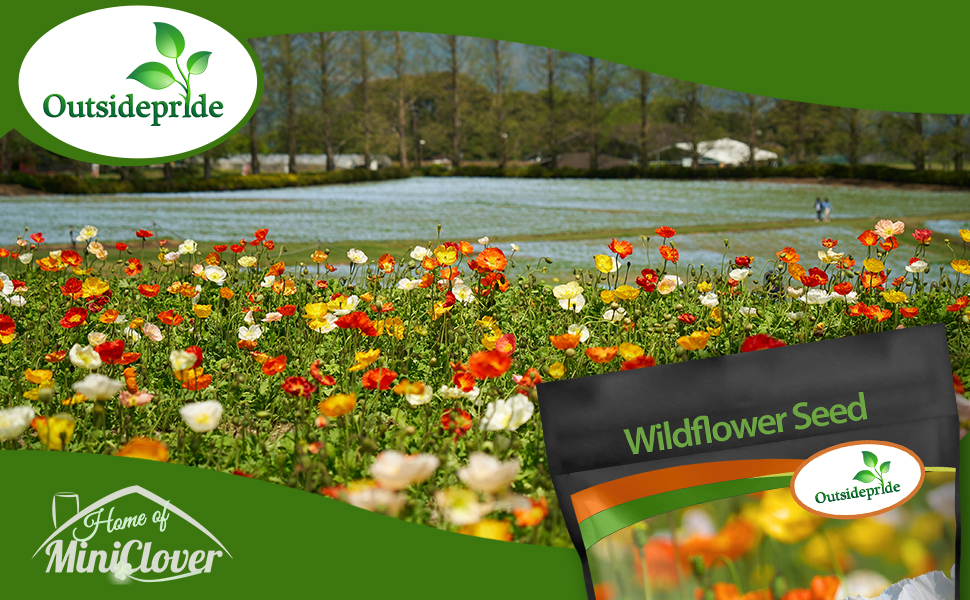
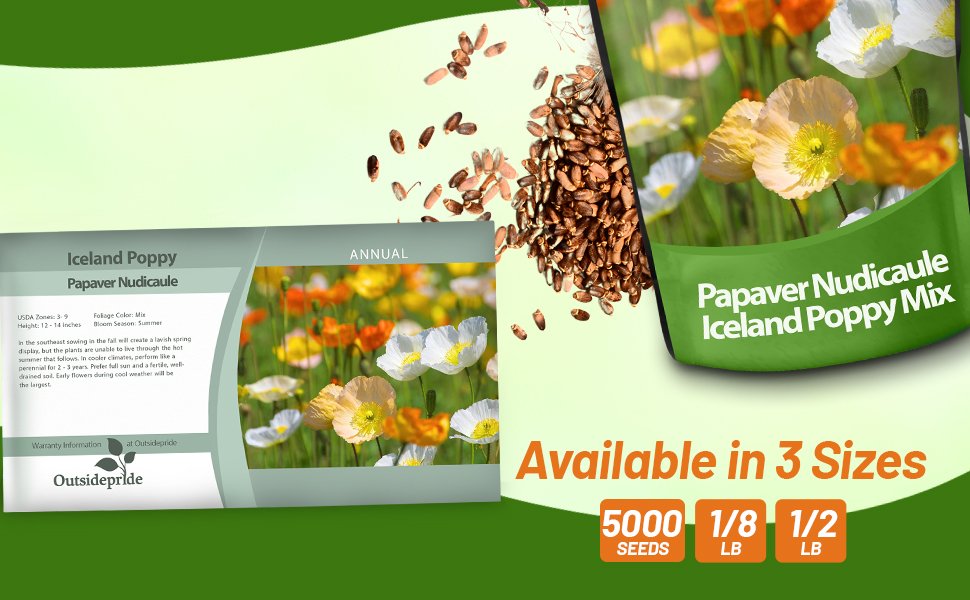
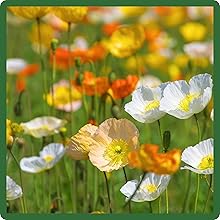
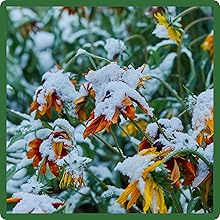
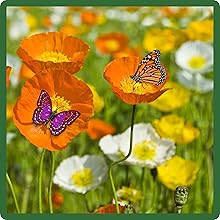
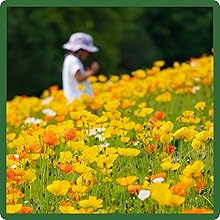
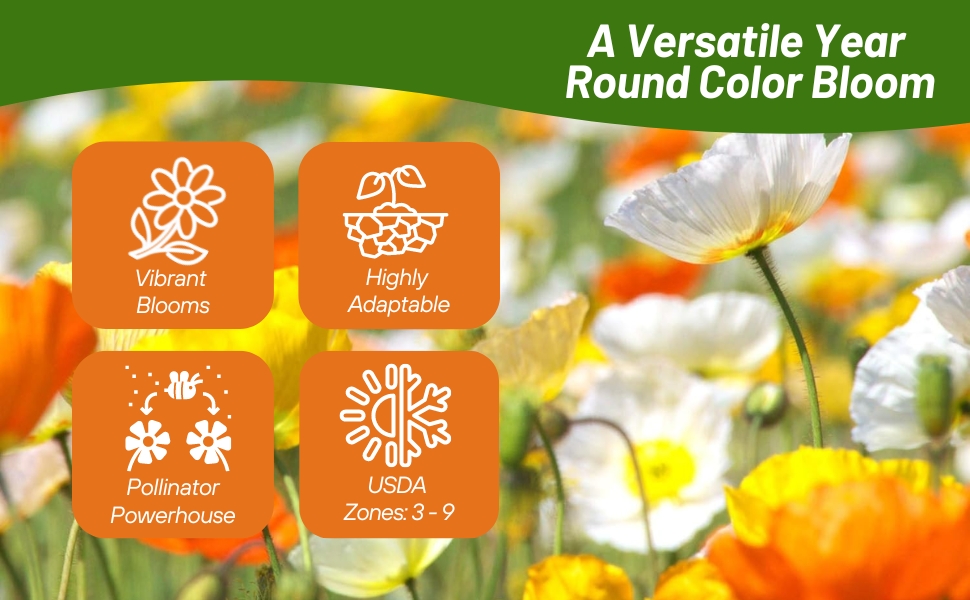
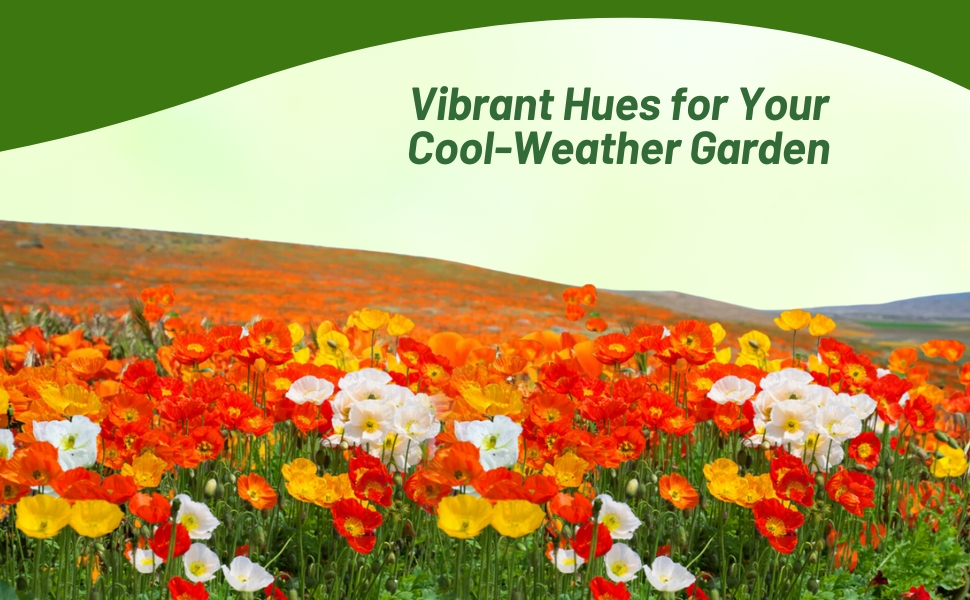
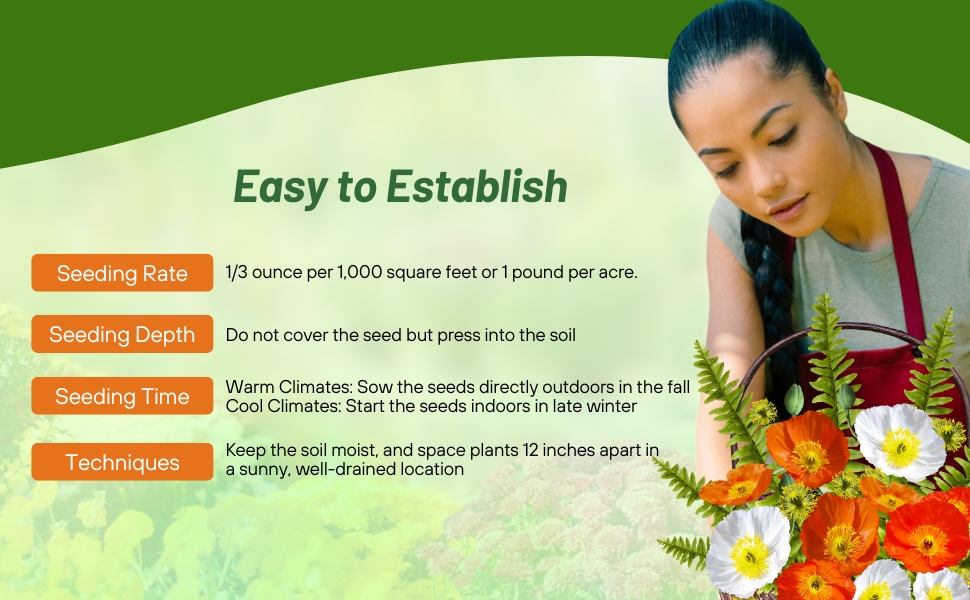
Iceland Poppy (Papaver Nudicaule) - Iceland Poppy wildflowers are a wonderful source of exceptionally beautiful colors. The Poppy flowers nearly glisten in the sun, and their petals look like crinkled silk. Easy-to-grow from Iceland Poppy seeds, these blooms come in an array of colors. Measuring 4 - 5 inches across, these single Poppy blooms open in shades of white, yellow, orange, pink, rose, and red as well as bi-colors! Iceland Poppies put on a fabulous wildflower garden show, and they are among the best for cutting, due to their durable stems and erect flower position.
Iceland Poppies are used extensively in the southeast by sowing the wildflower seeds in the fall to create a lavish spring display, but the plants are unable to live through the hot summer that follows. In cooler climates, Iceland Poppy plants perform like a perennial for 2 - 3 years. Iceland Poppies prefer full sun and a fertile, well-drained soil. Early flowers during cool weather will be the largest.
Common Questions
Can you grow Iceland poppies in containers?
Yes, you can grow in containers with good drainage holes and planted in well-draining soil. Since poppies are sensitive to transplanting, sow directly into the container you want them in that season—in the fall or early spring. Make sure to keep plants consistently watered and fed.
My Iceland poppy leaves are curling, what is wrong?
Powdery mildew is most likely your issue. Space out your plants, remove affected areas and apply fungicide.
Can I encourage more blooms with Iceland poppy?
Yes, by deadheading your spent flowers you will encourage a longer bloom season.
Do Iceland poppy attract any pollinators?
Yes – bees, butterflies and birds are all attracted to Iceland poppy flowers.
Planting Directions
TEMPERATURE
55 - 60F
AVERAGE GERM TIME
21 - 28 days
LIGHT REQUIRED
Yes
DEPTH
Do not cover the seed but press into the soil
SOWING RATE
2/3 ounce per 1,000 square feet or 2 pounds per acre
MOISTURE
Keep seeds moist until germination
PLANT SPACING
12 inches
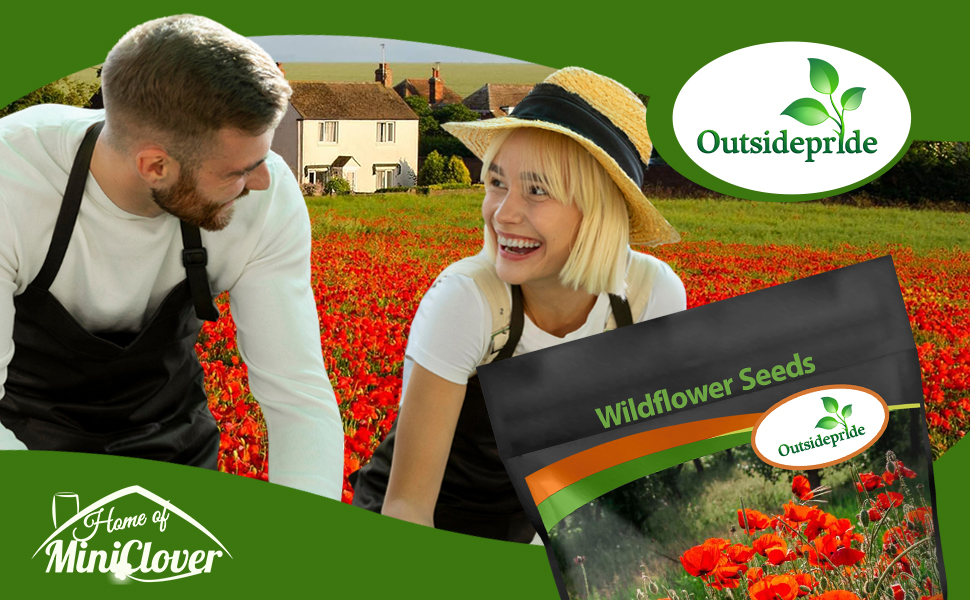
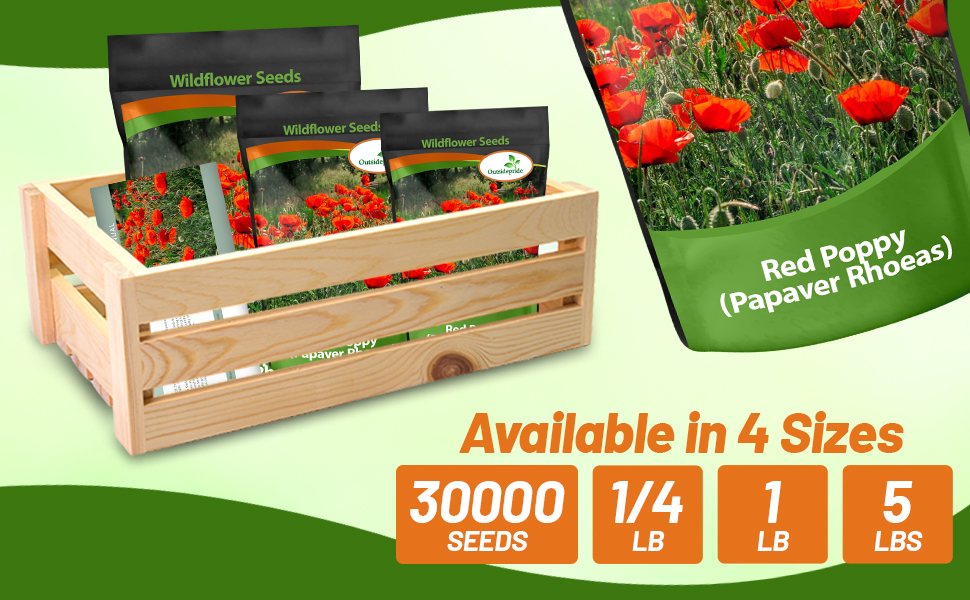
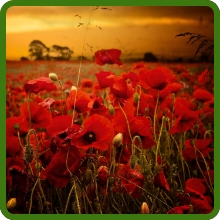
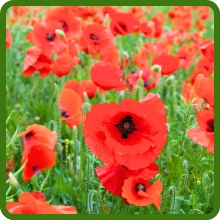
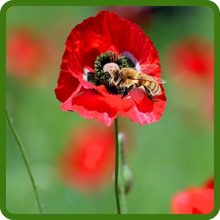
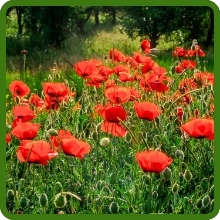
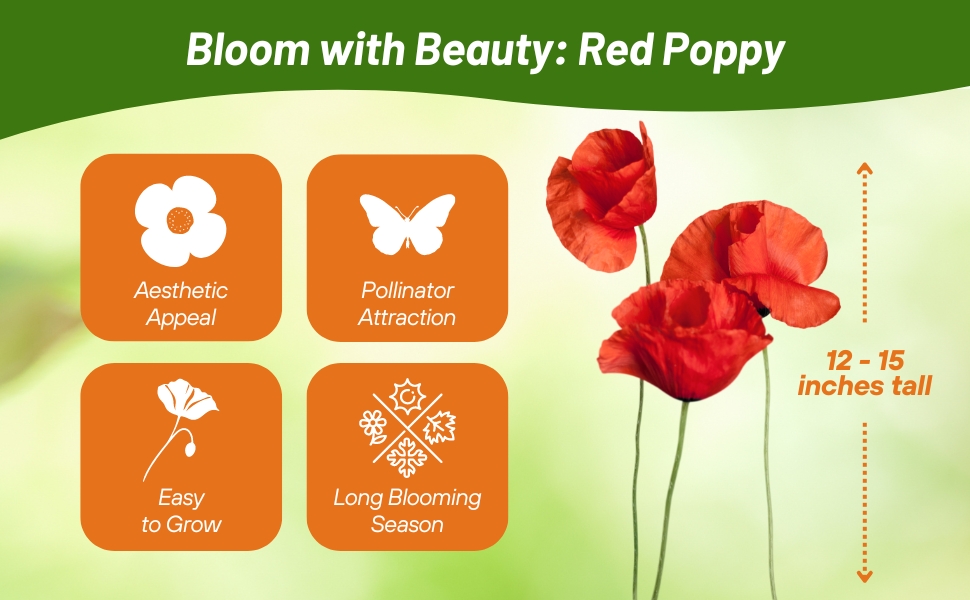
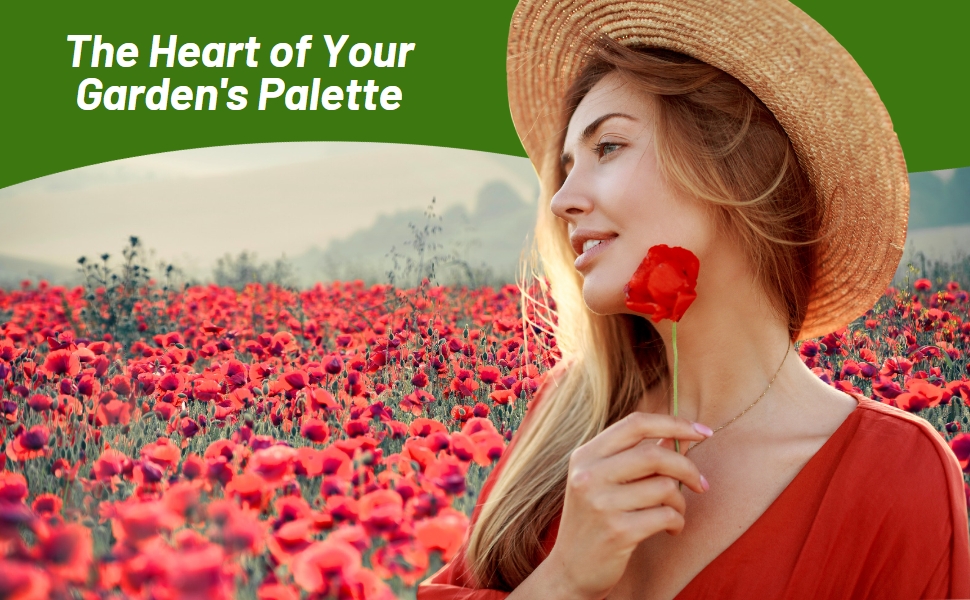
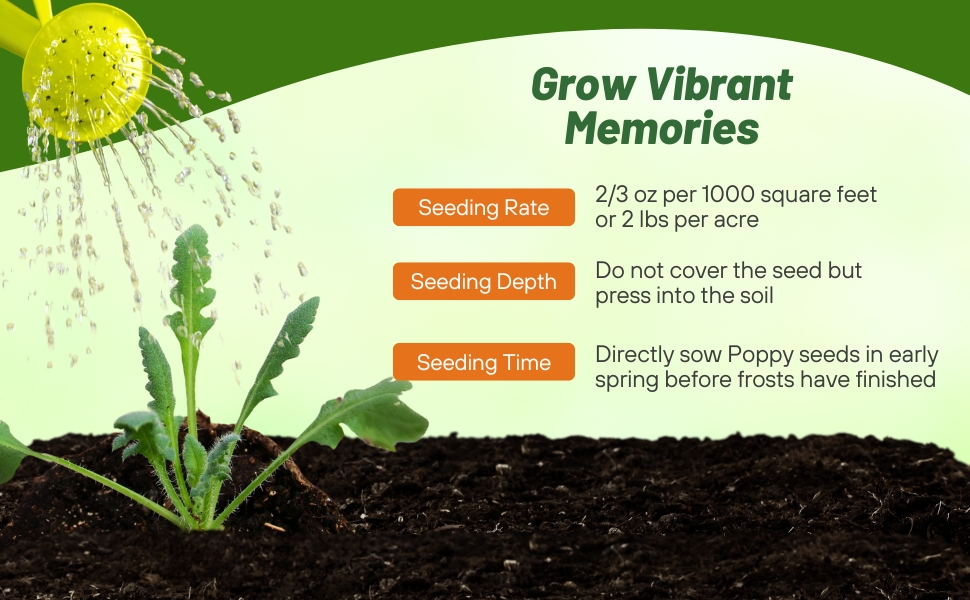
Red Poppy (Papaver Rhoeas) - The drought tolerant Red Poppy is one of the most popular wildflowers in all the world, and it easily establishes from Poppy seeds. It is also known as Shirley Poppy, Flanders Poppy, American Legion Poppy, (the red poppy is the symbol of the American Legion, handed out for Memorial Day), and in England, Corn Poppy. This wildflower is native to most of all Europe and North Africa. Growing Poppies from seed is such a rewarding experience. Red Poppies are favorites with xeriscape gardeners because they grow so successfully from wildflower seed, and they transform a dull boring landscape into an intense display of gorgeous red blooms. Since they are annuals, they grow quickly from flower seeds each spring and drop new Red Poppy wildflower seed in the fall.
Common Questions
Do I need to deadhead Papaver rhoeas?
This is optional; however, it will extend your bloom season.
Do I need to fertilizer Papaver rhoeas?
Typically, no. However, if you notice foliage and no flowers your plants may be in need of phosphorus-rich fertilizer.
Are these flowers fragrant?
They are not known for their scent, but they are valued highly for their blooms.
Planting Directions
TEMPERATURE
60F
AVERAGE GERM TIME
14 - 28 days
LIGHT REQUIRED
Yes
DEPTH
Surface sow up to 1/8th inch deep
SOWING RATE
5 - 6 seeds per plant
MOISTURE
Keep seeds moist until germination
PLANT SPACING
14 inches





Poppy Checkers (Papaver Orientale Checkers) - This beautiful flowering poppy plant will grow 24 - 36 inches tall. It prefers full sun and blooms most frequently in late spring through early summer. Plant Papaver Checkers within the perennial border, add to container planting, and makes nice companion for spring blooming bulbs. This perennial poppy has a clumping habit which results in more blooms per plant. The poppy flowers are huge and can reach 6 inches in diameter. Plant these poppy seeds in well-drained soil with a pH between 5.5 - 7.5. These flower seeds are very easy to germinate.
Common Questions
Do I need to fertilize oriental poppy?
Use a slow-release fertilizer in the spring. Be sure to follow product label directions. Another option is to side dress the soil with compost or manure tea.
Can I grow oriental poppy in a container?
Yes, however it is not ideal. These plants have a long tap root that do much better in garden soil. If containers are still something you would like to try choosing a container deep enough to handle the long tap root (terra cotta pots are best). Use quality potting mix with slow-release fertilizer, water deeply and always keep soil moist.
Do I need to winterize my oriental poppy plants?
Oriental poppies are winter hardy to USDA zone 8, they do benefit from a layer of mulch before winter sets in to protect the roots. If you are growing your flowers in a container, you can bury the container in garden soil or wrap with burlap or bubble wrap for protection. They can also be moved indoors.
Should Oriental poppies be cut back?
There's no need to trim them back, as the foliage naturally dies off after blooming. However, if you prefer a tidier look, you can cut the wilted leaves down to the ground.
Will Oriental poppies bloom in the first year?
The timing of when you plant the seeds is crucial. They require a cold period to flourish, so if you sow them in the spring, they won’t bloom until the next year.
Planting Directions
TEMPERATURE
60 - 65F
AVERAGE GERM TIME
14 - 21 days
LIGHT REQUIRED
Yes
DEPTH
Surface sow seeds just barely covering
SOWING RATE
3 - 4 seeds per plant
MOISTURE
Keep seeds moist until germination
PLANT SPACING
8 - 10 inches
Poppy (Papaver rupifragum Double Tangerine Gem) - This perennial flower is a native of Morocco and brings saturated tangerine tones to the most rocky and arid landscapes. Fully double orange blooms of overlapping rings of paper-thin silky petals with Ferny, silver-blue foliage only growing 12 inches tall. Sunlight makes the translucent petals of Papaver Double Tangerine positively glow with color. The fascinating attractive seedpods will add a nice touch to dried arrangements. This cute little robust plant looks best in a rock garden or edging a hot, sunny border.
This pollinator-attracting blooms in the first year and reseeds readily. In 1890, Sir William Jackson Hooker described finding P. rupifragum growing in dry, rocky places of southern Morocco at an elevation of 6,000 - 7,000 feet. Indeed, this drought-tolerant plant is perfect for meadows, xeriscaping, rocky gardens, and sunny, dry locations!



























